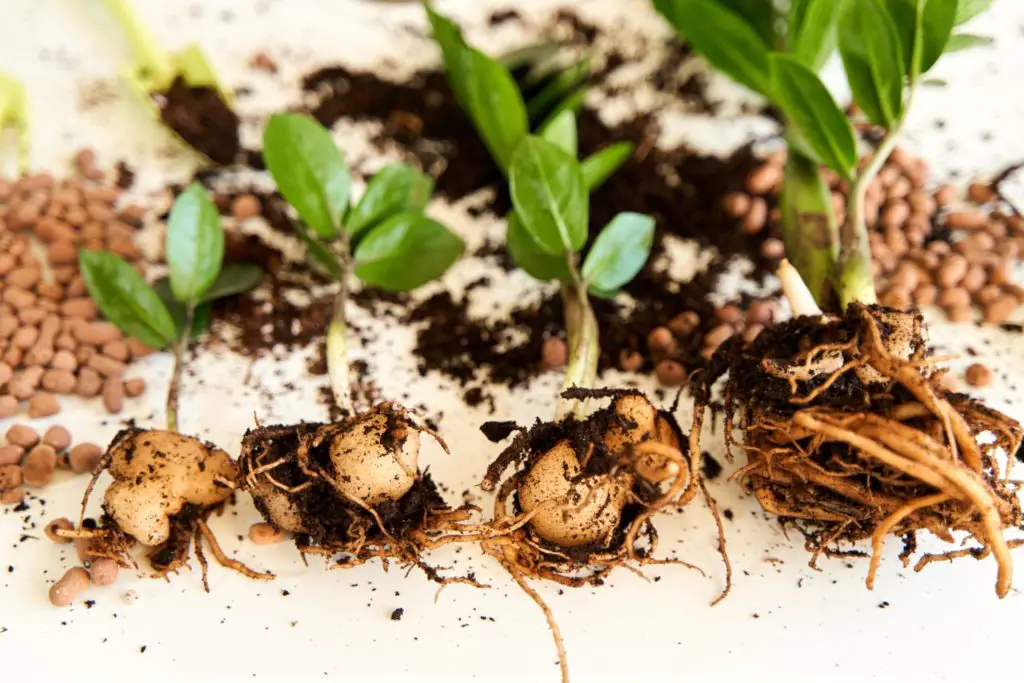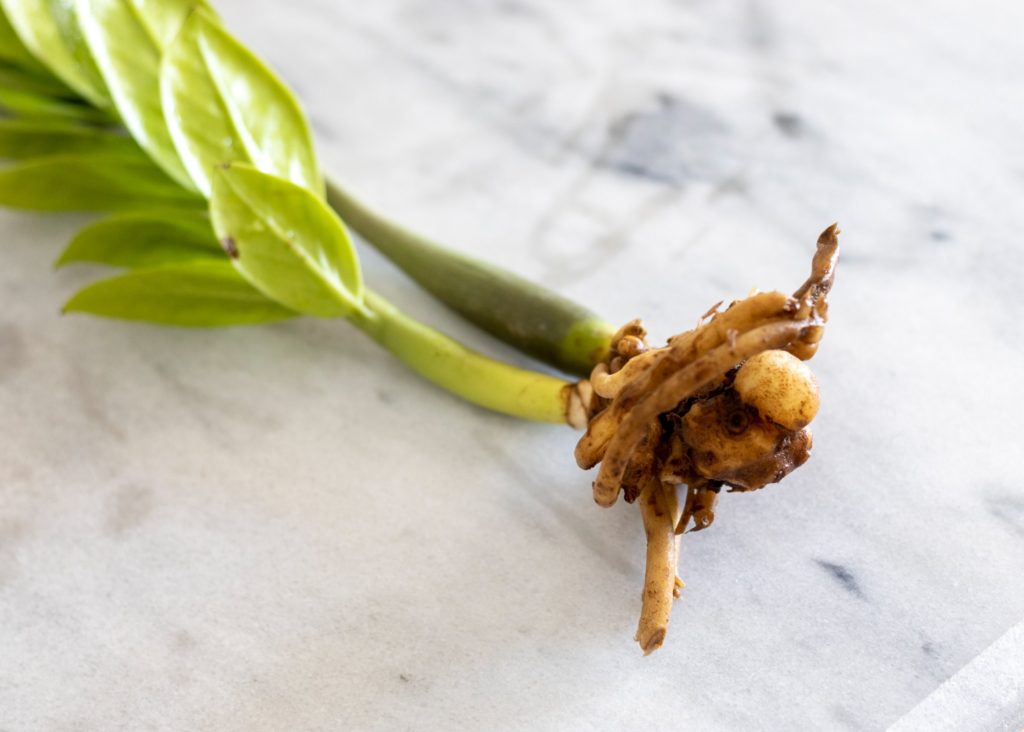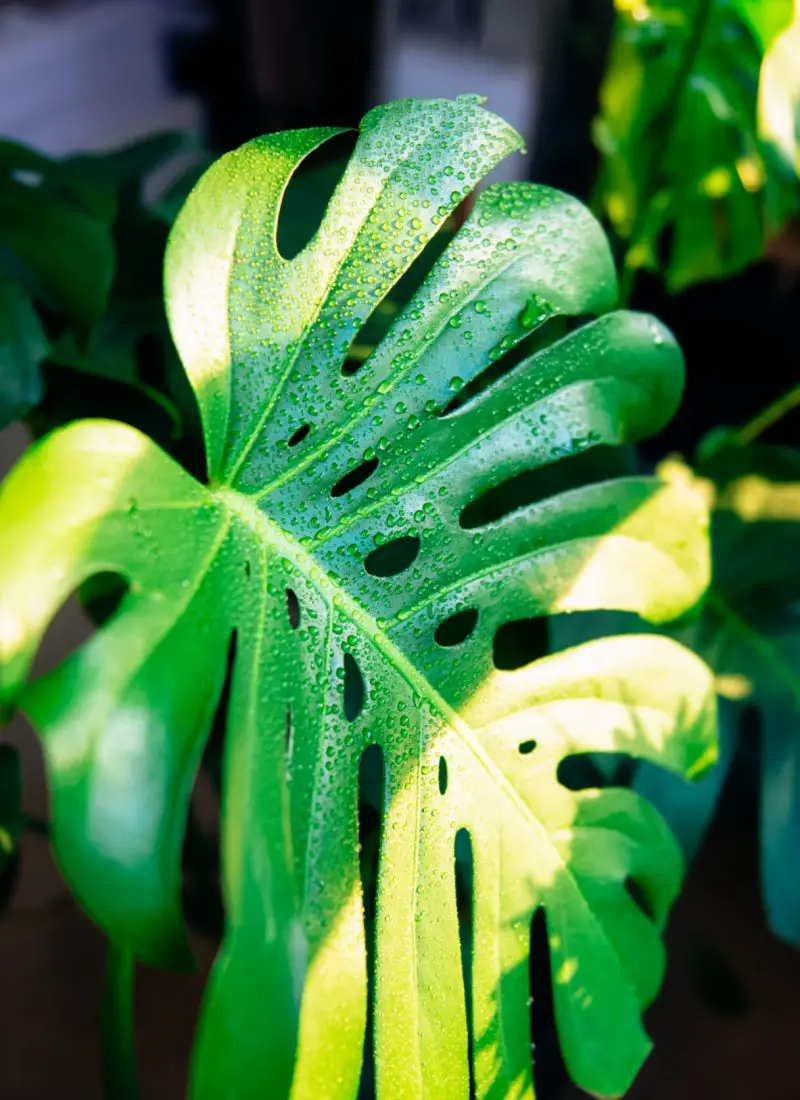
There’s nothing like having a good cup of joe with your vibrant ZZ plant beside you before throwing the coffee dregs at the bottom of your cup straight into the soil. Your plant doesn’t seem to mind it every now and then either. Does this mean the coffee grounds are good for your ZZ plant?
As a whole, coffee grounds can cause detrimental effects on plants, including ZZ plants. When the grounds are thrown on top of the plant’s soil, they will harden and prevent water and air from penetrating. Fresh coffee grounds are also phytotoxic and should never be used directly on plants.
Below, I talk more about this in detail, along with helpful tips to use coffee grounds in a way that is beneficial to your ZZ plants growth:
(As an Amazon Associate, I earn from qualifying purchases.)
Table of contents
Why are Coffee Grounds Bad for ZZ Plants?
As mentioned in the introduction, using used coffee grounds on ZZ plants, or any plants for that matter, is not a good idea. Fresh grounds are even more harmful because they’re potent, slowing down or stopping plant growth altogether. But in this context, we will primarily focus on used coffee grounds.
Here are some truths you should know about why “using coffee grounds in your garden” is nothing but a gardening myth:

- They CANNOT be used to lower the soil’s pH, i.e., make it more acidic for plants like rhododendron and blueberries.
Some people know coffee to be acidic, which is undoubtedly true. So conceptually, it makes sense that if you apply coffee grounds to your soil, they can help acidify it, right?
But it’s not as simple as that. There’s barely enough scientific data and research on the subject, so it’s still inconclusive. But the consensus so far is that coffee ground’s pH fluctuates over time as it breaks down in the soil, resulting in no significant changes in the soil’s pH.
You are better off using elemental sulfur, which is far more effective in acidifying the ground’s pH. You can read more about other soil amendments in this other article I wrote. But where possible, it’s best to work with your current soil type rather than adjust it to grow a specific plant.

- They CANNOT be used as an effective, stand-alone mulch in the landscape.
Coffee grounds are often fine and readily become dense and compact when you leave them out to dry. If you apply them as mulch on the ground or in a pot, it essentially becomes an impenetrable barrier that prevents moisture and air from entering the soil. It’s like the reverse of Gandalf vs. the Balrog going, “You shall not PASS!”
Therefore, using a thick layer of coffee grounds as mulch in your garden is a recipe for disaster. However, you can combine it with other mulches to make it work better. According to Linda Chalker-Scott from Washington State University, it’s advisable to use ½ an inch of used coffee grounds layer and topped with another layer of loose mulch like shredded wood chips or bark. You may be unable to upcycle much coffee grounds with this method if you have a small garden, but it’ll be helpful if you have a larger one.
On another note, I highly recommend checking out Linda’s Horticultural Myths and The Garden Professors™. Their writings are delightful and informative in helping you understand complex horticulture matters.

- They contain leftover nutrients that can benefit plant growth but are only accessible AFTER composting.
Again, this is not as simple as dumping your coffee grounds in the soil and expecting them to sprout your plants big enough for a boy named Jack to climb up into the clouds. It’s a bit more nuanced than that. Everything, including scraps, will always have leftover nutrients that can be utilized for plant growth but not in their present state. Breaking them down in compost is often the best way to release them effectively.
The good thing about coffee grounds is that they are high in Nitrogen even after use. This makes them a perfect component to add to a composting pile, balanced with plenty of carbon materials such as shredded leaves and papers. However, it’s essential to only use a maximum of 20% coffee grounds. Otherwise, it may offset the composting process.
As a result, you get a nutrient-rich substance that is good for fertilizing plants, improving soil structure, and more! You can mix this into your garden or potting soil, but it’s more commonly used in the former. You can read this composting article if you’re interested in starting one yourself.
Helpful tip: When adding coffee grounds to your compost pile, ensure it has thoroughly cooled down. Otherwise, the residual heat will kill off some valuable microorganisms in the heap.
With all of the above in mind, giving ZZ plants coffee grounds is no different. It serves no beneficial purpose without being composted and will only restrict water intake for the plant. When left to accumulate, it will cause severe underwatering and cause lasting damage to a ZZ plant.
How Do You Stimulate More Growth from a ZZ Plant?
Now you know how to use coffee grounds more effectively for your plants, including a ZZ plant. BUT it’s important to remember that fertilizing is not the only thing the plant needs to grow better. You still need to address its other essential needs to ensure you get the best development out of your ZZ plant.
Here is a complete list of a ZZ plant’s needs to grow well:

- Give them plenty of bright, indirect sunlight. This will encourage the plant to develop foliage quicker. Though it’s worth noting, they can tolerate really low light conditions. The downside is that this will slow down its growth. If the leaves look brown and scorched, it is probably receiving too much direct light. Move the plant to a shaded area and let it recover before trimming off the damaged leaves.

- Water once every 1-2 weeks after most of the soil dries out. Don’t worry if you forget to water the plant. It can survive dry periods thanks to its thick roots, which store water. It’s better to err on the side of underwatering than overwatering to avoid rotting the roots. In the winter, stick to watering once a month after the soil has completely dried. If you notice the plant dropping leaves with no signs of damage, it may be severely underwatered.

- Use an all-purpose fertilizer once or twice a year, from spring to summer. This is a good pick-me-up for the plant, considering it’s growing in a container. Potted plants don’t have the benefit of having a constant supply of nutrients like garden soil with living microbes. So it falls on us as plant owners to ensure our plants get a nutrient boost once in a while just to help it along. Or, as mentioned before, you can add composted coffee grounds into the potting soil too.

- Plant in a well-draining potting mix. ZZ plants prefer growing in a constantly moist potting mix. They are not particularly picky about their growing medium, as long as it doesn’t retain moisture too long, like clay-based soil. Use a standard potting mix, and add more aerating materials such as perlite or vermiculite if you’d like to improve the soil’s drainage.

- Place in a consistently warm room of 70-90˚F with high humidity levels of more than 50%. Ensure the temperatures don’t drop below 60˚F; otherwise, the plant will suffer from cold damage. It’s worth keeping in mind that ZZ plants will tolerate cool, less humid rooms. It will just grow slower as a result.

- Pruning is optional for the plant, reserved for cutting off damaged and old leaves only. Otherwise, you can skip this care altogether.

- Propagate ZZ plants using leaf cuttings. The plant readily takes root regardless if there’s a node or not. But unfortunately, stem cutting doesn’t work to propagate this plant. The most important thing to ensure the propagated plants will grow is to provide them with enough water and light. You can also try dividing their rhizomes, but it’s a bit harder and not completely guaranteed.

- Repot the plant once every 2 years in early spring. After a while, the plant will get overcrowded and break the pot if you let it stay in the same container for too long.

- Do a weekly pest & disease check on the plant. Generally, ZZ plants don’t suffer from any pests problems. However, root rot tends to be the common disease it suffers, so be careful not to overwater your plant.
Important note: ZZ plants are toxic upon ingestion. Keep the plants far from the reach of pets and children.
It’s worth noting that ZZ plants are notoriously slow-growing indoors due to the less than adequate conditions. So if you want to see more growth, provide the best you can for its needs, and the plant will reward you with lush foliage!
Frequently Asked Questions about ZZ Plants

An all-purpose liquid or slow-release fertilizer or compost is the best fertilizer to encourage a ZZ plant’s growth. As long as you provide the plant with the best care for its overall needs, you may not even need to depend on fertilizer for it to develop well.
Adequate indirect sunlight and biweekly watering will encourage the best growth from ZZ plants to develop shiny leaves. There is no specific secret apart from addressing the plant’s basic care needs to get it to look its best.
ZZ plants will bloom when given complete care, such as providing the right amount of water, fertilizer, and light. However, it’s worth noting that the plant rarely flowers in indoor conditions, so don’t worry if you don’t see any blooms appear.
As a whole, trim the yellow leaves off ZZ plants after investigating the possible causes. They may indicate root rot problems, underwatering, too much direct light, or lack of/excessive fertilizing. Pruning the leaves doesn’t solve the underlying problem, so ensure to check if there’s something that needs fixing first.
Inadequate care may cause a faded green color on ZZ plants before it turns entirely yellow. A thorough check of the plant needs to be done to assess the problem before fixing it. However, do not confuse this with new growth. New shoots usually develop from a light green before turning dark green.
Final Words
Overall, there is no clear scientific evidence to show that ZZ plants like or dislike coffee grounds. It is generally better for most organic materials to be composted before adding it to your plants soil. Let’s stick to making coffee for us humans and keep them far away from our plants. Happy planting!
References:
https://extension.oregonstate.edu/gardening/soil-compost/coffee-grounds-composting
https://extension.arizona.edu/using-coffee-grounds-garden
https://extension.umn.edu/manage-soil-nutrients/coffee-grounds-eggshells-epsom-salts#sources-2270610
https://s3.wp.wsu.edu/uploads/sites/403/2015/03/coffee-grounds.pdf
http://pubs.cahnrs.wsu.edu/publications/wp-content/uploads/sites/2/publications/fs207e.pdf
https://www.canr.msu.edu/uploads/resources/pdfs/7-_zz_plant.pdf
https://gardeningsolutions.ifas.ufl.edu/plants/houseplants/zz-plant.html
https://plants.ces.ncsu.edu/plants/zamioculcas-zamiifolia/
https://hortnews.extension.iastate.edu/2009/2-4/Zamioculcas.html
https://blogs.ifas.ufl.edu/nassauco/2017/06/11/fact-sheet-zz-plant/





